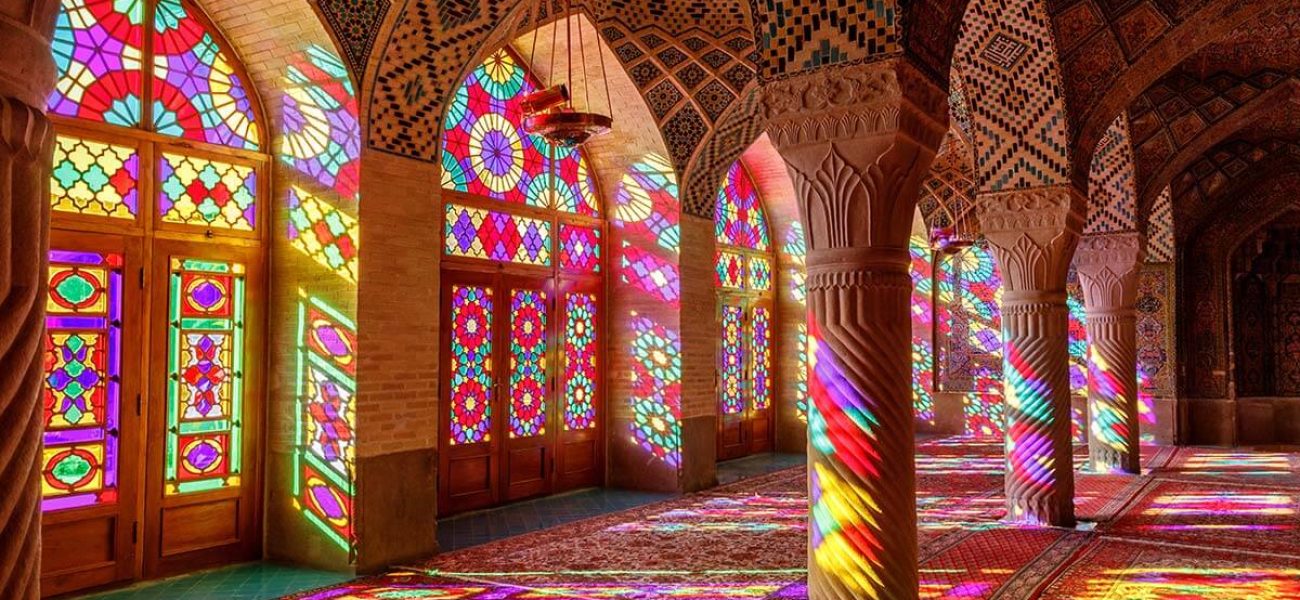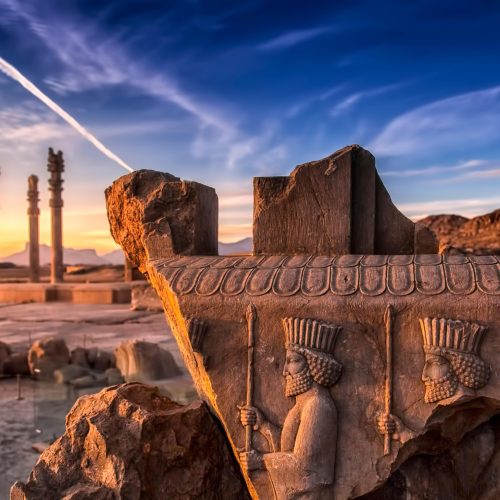By Arman Soltani, Iranian Tour Leader and Travel Vlogger
Iran, a land rich in history, culture, and natural beauty, has long been a destination that captures the imagination of travelers from around the world. Yet, despite its treasures, Iran remains relatively under-explored by global tourists due to misconceptions, visa restrictions, and geopolitical concerns. However, in recent years, Iran has made significant strides in expanding its tourism sector, presenting both challenges and opportunities for foreign visitors. As an Iranian tour leader and travel vlogger, I’ve had the privilege of guiding countless travelers through the country’s diverse landscapes and cultural landmarks. In this article, I’ll provide an in-depth look at Iran’s tourism industry, offering insights into its background, visa requirements, infrastructure, and how the country’s cultural heritage is being preserved for both local and international travelers.
Background: Iran’s Long History as a Travel Destination
Iran’s role as a crossroads of civilizations is rooted in its millennia-old history. The ancient Persian Empire, under rulers such as Cyrus the Great and Darius I, was one of the largest and most influential empires of the ancient world, stretching from Egypt to the Indus Valley. It attracted scholars, merchants, and adventurers from around the globe, a tradition of hospitality that has deepened over time. Today, remnants of this vast empire—Persepolis, Pasargadae, and the city of Shiraz—remain major attractions for those seeking to delve into history.
In the Islamic era, Iran continued to be a center of culture, art, and trade. The Safavid dynasty (1501–1736), with its capital in Isfahan, brought Persian architecture to new heights, leaving behind a legacy of splendid mosques, bridges, and palaces. Iran’s cultural richness extends far beyond its ancient heritage; its people are known for their warm hospitality, and its cuisine, literature, and arts are among the most admired in the world.
Despite this, Iran’s modern tourism industry has been deeply affected by the geopolitical landscape. Political tensions and economic sanctions have long hampered the country’s ability to develop its tourism sector to its full potential. Nevertheless, a changing global outlook and government initiatives have set the stage for the nation to open up and promote its tourism resources. Iran has much to offer, from its historical cities and UNESCO World Heritage Sites to its stunning landscapes, including vast deserts, lush forests, and towering mountain ranges.
Foreign Visitors: Who is Coming to Iran?
Iran’s allure as a tourist destination has grown in recent years, attracting visitors from all walks of life. The country’s rich cultural heritage, coupled with its strategic location on the old Silk Road, has historically drawn visitors from Europe, the Middle East, and Asia. In recent years, however, Iran has also seen a steady increase in visitors from countries like China, India, and Russia, alongside a growing number of adventurous Western tourists.
The majority of foreign tourists visiting Iran fall into a few key categories:
- Cultural Tourists: These visitors come primarily to explore Iran’s rich history and heritage. They visit ancient cities like Persepolis, Yazd, and Isfahan, marveling at the architecture, historical monuments, and UNESCO World Heritage Sites. The chance to engage with Iran’s vast historical treasures is often a key motivator for this group.
- Adventure Tourists: Iran’s diverse landscapes make it an attractive destination for those seeking outdoor adventure. From trekking in the Alborz Mountains to exploring the deserts of Dasht-e Kavir, Iran offers a wide range of activities for the adventurous traveler.
- Religious Pilgrims: Iran is home to several important religious sites, particularly for Shia Muslims. The city of Mashhad, which houses the shrine of Imam Reza, the eighth Shia Imam, is one of the most significant pilgrimage destinations in the Islamic world. Other cities like Qom and Shiraz also attract religious visitors, particularly from Iraq, Pakistan, and Bahrain.
- Business Travelers: As Iran works to open up its economy to the world, it has increasingly attracted business travelers interested in exploring opportunities within the country. This includes sectors like oil and gas, agriculture, and, more recently, tourism itself. Business travelers also visit for conferences, trade shows, and diplomatic exchanges.
Despite Iran’s growing appeal, challenges remain. International perceptions of Iran, shaped by decades of negative media coverage, have led to a degree of hesitancy among travelers, particularly from Western countries. However, those who do choose to visit often leave with a much more nuanced understanding of the country and its people.
Visa Requirements: Navigating the Bureaucratic Maze
For many foreign travelers, the process of obtaining a visa is the first challenge to overcome when planning a trip to Iran. However, in recent years, Iran has simplified its visa process to encourage more tourism. The country offers several types of visas, including tourist, business, and transit visas.
- Visa on Arrival (VOA): One of the most significant developments in recent years has been the introduction of Visa on Arrival (VOA) for citizens of around 180 countries. Travelers can obtain a VOA at several major airports, including Tehran’s Imam Khomeini International Airport, Shiraz International Airport, and Isfahan International Airport. The VOA is typically valid for 30 days, with the possibility of extension.
- E-Visa: To further simplify the process, Iran introduced an e-visa system in 2017. Visitors can apply for an e-visa online, upload the required documents, and receive a visa authorization code before traveling. The process generally takes about 7–10 days and can be done through the official Iranian Ministry of Foreign Affairs (MFA) website or through approved travel agencies.
- Visa Exemptions: Citizens from certain countries, including Armenia, Azerbaijan, Bolivia, Egypt, Georgia, Malaysia, Syria, and Turkey, can visit Iran for short stays without a visa.
- Restrictions: While the visa process has become more accessible for many nationalities, citizens of the United States, Canada, and the United Kingdom face additional restrictions. These travelers must arrange their visits through an authorized tour agency and are required to be accompanied by a licensed guide for the duration of their stay.
- Israeli Passport Holders: Citizens of Israel are prohibited from entering Iran, and travelers with Israeli entry stamps in their passports may also face difficulties entering the country.
It’s worth noting that the political situation can affect visa policies, and travelers are advised to stay updated on the latest requirements before booking their trips.
Infrastructure and the Economy: Balancing Modernization and Tradition
Iran’s tourism infrastructure is a mix of the old and the new. The country has made considerable investments in recent years to modernize its hotels, transportation networks, and tourist facilities, particularly in major cities such as Tehran, Isfahan, and Shiraz. However, rural and remote areas may still lack the same level of infrastructure, presenting both challenges and opportunities for more adventurous travelers.
Transportation
- Air Travel: Iran has a robust domestic air travel network that connects major cities. Airlines such as Iran Air, Mahan Air, and Aseman Airlines offer regular flights between cities, and there are several international flights from major hubs in Europe, Asia, and the Middle East. However, due to international sanctions, Iran’s aviation industry has struggled to modernize its fleet, and some flights may be subject to delays or cancellations.
- Rail Travel: The rail network in Iran is extensive, connecting major cities and regions. Trains are a popular and affordable option for domestic travel, offering scenic routes through the country’s mountainous and desert landscapes. The Tehran-Mashhad line, in particular, is a well-traveled route, especially for pilgrims. Iran has also been developing high-speed rail links between major cities, although these are still in the planning stages.
- Road Travel: Iran’s road infrastructure is well developed, with a network of highways and roads connecting all corners of the country. Traveling by car is a common way for tourists to explore Iran, especially for those visiting more remote areas. Rental cars are available, and bus services provide an affordable option for longer journeys. Iranian roads are generally well-maintained, although driving standards may differ from what foreign visitors are accustomed to.
Accommodation
Iran offers a wide range of accommodation options, from luxurious five-star hotels to budget hostels and traditional guesthouses known as caravanserais. In recent years, eco-tourism and boutique hotels have also gained popularity, particularly in rural and natural areas such as the villages surrounding Masuleh, the forests of Gilan, and the Kavir Desert.
- Luxury Hotels: Major cities like Tehran, Isfahan, and Shiraz are home to several luxury hotels that cater to both tourists and business travelers. These establishments often provide amenities such as swimming pools, gyms, restaurants, and conference facilities.
- Traditional Accommodation: For travelers seeking a more authentic experience, staying in traditional Iranian guesthouses or restored caravanserais can be an unforgettable experience. These accommodations often feature traditional Persian architecture and offer a more intimate connection with Iranian culture.
Economic Impact
Tourism has become an increasingly important sector for Iran’s economy. While oil and gas remain the dominant industries, tourism is seen as a key sector for diversification, creating jobs, and generating foreign currency revenue. According to the Iranian government, tourism generated approximately $8 billion in 2019, a figure that could grow substantially if geopolitical conditions improve.
However, challenges such as fluctuating currency exchange rates, international sanctions, and banking restrictions continue to hinder the full development of the tourism sector. Many international banks and credit card companies do not operate in Iran, meaning that visitors must bring cash for the duration of their stay.
Nevertheless, tourism plays a crucial role in regional economies, particularly in areas like Yazd, Kashan, and Kerman, where the preservation of cultural heritage and investment in tourism infrastructure have had positive effects on local communities.
Cultural Heritage, Handicrafts, and the Tourism Organization of Iran
The Islamic Republic of Iran is home to 26 UNESCO World Heritage Sites, reflecting the country’s commitment to preserving its cultural heritage. These sites range from the ancient ruins of Persepolis and the historical gardens of Shiraz to the vast desert landscapes of Lut Desert. The preservation of Iran’s cultural and natural heritage is overseen by the Cultural Heritage, Handicrafts, and Tourism Organization of Iran (ICHHTO), which plays a crucial role in managing and promoting Iran’s tourism industry.
The ICHHTO is responsible for:
- Preserving Historical Sites: The organization works to protect and restore Iran’s vast number of historical sites, ensuring that future generations can continue to appreciate them. This includes not only the country’s ancient ruins but also its Islamic architecture, Persian gardens, and cultural artifacts.
- Promoting Handicrafts: Iran is renowned for its traditional handicrafts, including carpets, pottery, and metalwork. The ICHHTO supports artisans and promotes the sale of Iranian handicrafts to tourists, helping to preserve these traditional skills and providing a vital source of income for many communities.
- Tourism Promotion: The ICHHTO also plays a key role in promoting Iran as a tourist destination, both domestically and internationally. The organization works to enhance the country’s image abroad, highlighting its cultural richness and natural beauty to attract more visitors.
Outward Tourism: Iranian Travelers Abroad
While Iran’s tourism sector has focused primarily on attracting international visitors, outbound tourism is also a significant trend. Increasing numbers of Iranians are traveling abroad for leisure, education, and business, particularly to neighboring countries such as Turkey, the United Arab Emirates, and Armenia. The affordability of these destinations, along with relaxed visa requirements, has made them popular among Iranian travelers.
Key Outbound Destinations for Iranians:
- Turkey: Istanbul, Antalya, and Cappadocia are popular destinations for Iranian tourists due to their proximity and cultural affinity.
- United Arab Emirates: Dubai, with its shopping centers, entertainment options, and liberal visa policies, is another favored destination.
- Europe: While traveling to Europe can be more complicated due to visa restrictions, many affluent Iranians visit destinations such as France, Germany, and Italy for tourism and education purposes.
A Land of Opportunity and Challenges
Iran stands at a crossroads when it comes to tourism. Its natural beauty, cultural heritage, and ancient history offer incredible potential for growth, but this potential remains tempered by geopolitical factors, economic challenges, and infrastructure limitations. However, for those travelers willing to navigate these challenges, Iran offers an unparalleled travel experience.
With ongoing efforts to develop the country’s tourism sector, improve infrastructure, and promote a more open and welcoming image to the international community, Iran is positioning itself as one of the world’s most exciting emerging travel destinations. Whether for history, adventure, or cultural immersion, Iran remains a land full of wonders waiting to be discovered. As the world becomes more connected, and as perceptions continue to shift, it is likely that we will see a growing number of tourists making their way to Iran in the years to come, discovering for themselves the warmth and hospitality of this ancient land.




